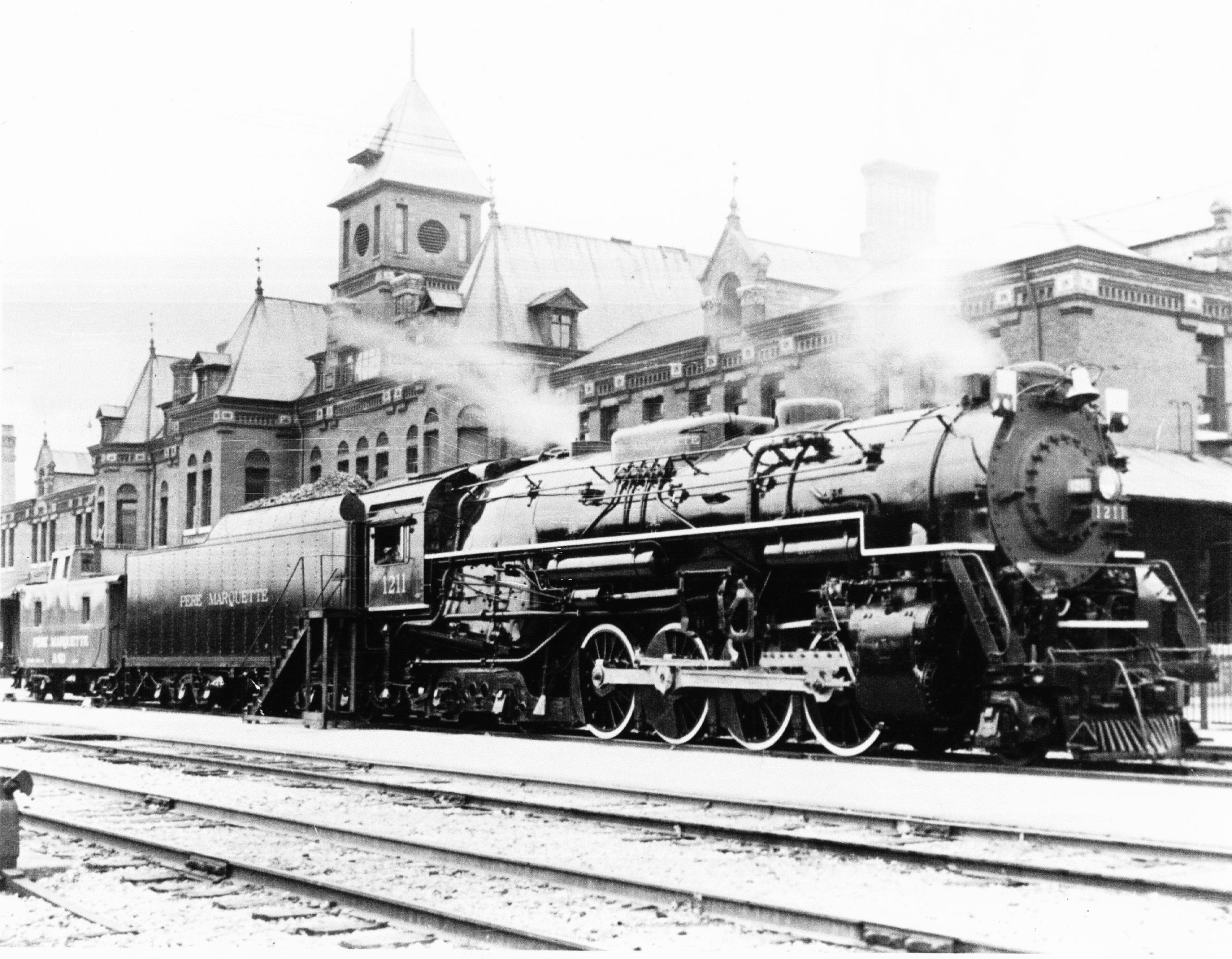The History of Potter street Station
From Construction to Present
The Flint & Pere Marquette Union Station is the largest Victorian era railroad station still standing in the United States. It is currently owned by the Saginaw Depot Preservation Corporation (SDPC), a 501c3 non-profit
The Flint & Pere Marquette Union Station, commonly known as the Potter Street Station, is a former railroad station built in 1881 and used until 1950 located at 501 Potter Street in Saginaw, Michigan, United States. It was designed by New York City architect Bradford Lee Gilbert. The station is 285 feet by 40 feet with 2½ stories.
Before the Flint & Pere Marquette Railroad came to Saginaw, the City of Saginaw was divided into two cities. Saginaw City (known today as the west side of Saginaw) was the oldest part of the city, and East Saginaw was later established. The two cities, at times, would rival one another. When the F&PM proposed their road through the cities, they planned to enter East Saginaw from the southeast near Brady Hill, and cross the river near Bristol Street. There would have been a depot on the east side where City Hall now stands, and another on the west side of the river.
Immediately the F&PM was faced with opposition from Saginaw city officials, claiming that their city should have the rights to the road since Saginaw was the oldest town. Their goal was to cut East Saginaw off from any rail service by recommending the road came in from the south and cross the river at Mackinaw Street, with a depot near Gratiot and Mackinaw Streets.
East Saginaw businessmen retaliated by encouraging the F&PM to cut Saginaw off completely by entering East Saginaw north of the business section. They then purchased a large tract of land near Washington and Potter Streets for a depot and terminals.
During its construction in October 1881, the Saginaw Daily Courier stated: "... the new depot is the largest railway passenger depot in the state. It is designed to be practical, substantial and businesslike. Nothing for mere ornamentation, ..."
By 1947, the Flint and Pere Marquette was gone, having been merged to form the Pere Marquette Railway in 1900, which was then purchased by the Chesapeake and Ohio Railway. Three years later, C&O discontinued passenger service in Saginaw and in 1955, had plans to demolish the building with the intention of using the land for new offices and a warehouse. This never happened and thus, the station was used as a crew base until 1986, when C&O successor, CSX Transportation closed the station. It is currently vacant and owned by a non-profit organization called The Saginaw Depot Preservation Corporation (SDPC). The station was involved in an arson fire on April 16, 1991. The SDPC was able to obtain a grant from MDOT to repair the roof in 1993. The SDPC continues to apply for grants to stabilize and preserve the station.
The station was added to the National Register of Historic Places on November 29, 1996.
In 2022, SDPC successfully had the station and surrounding area designated a full Historic District.





